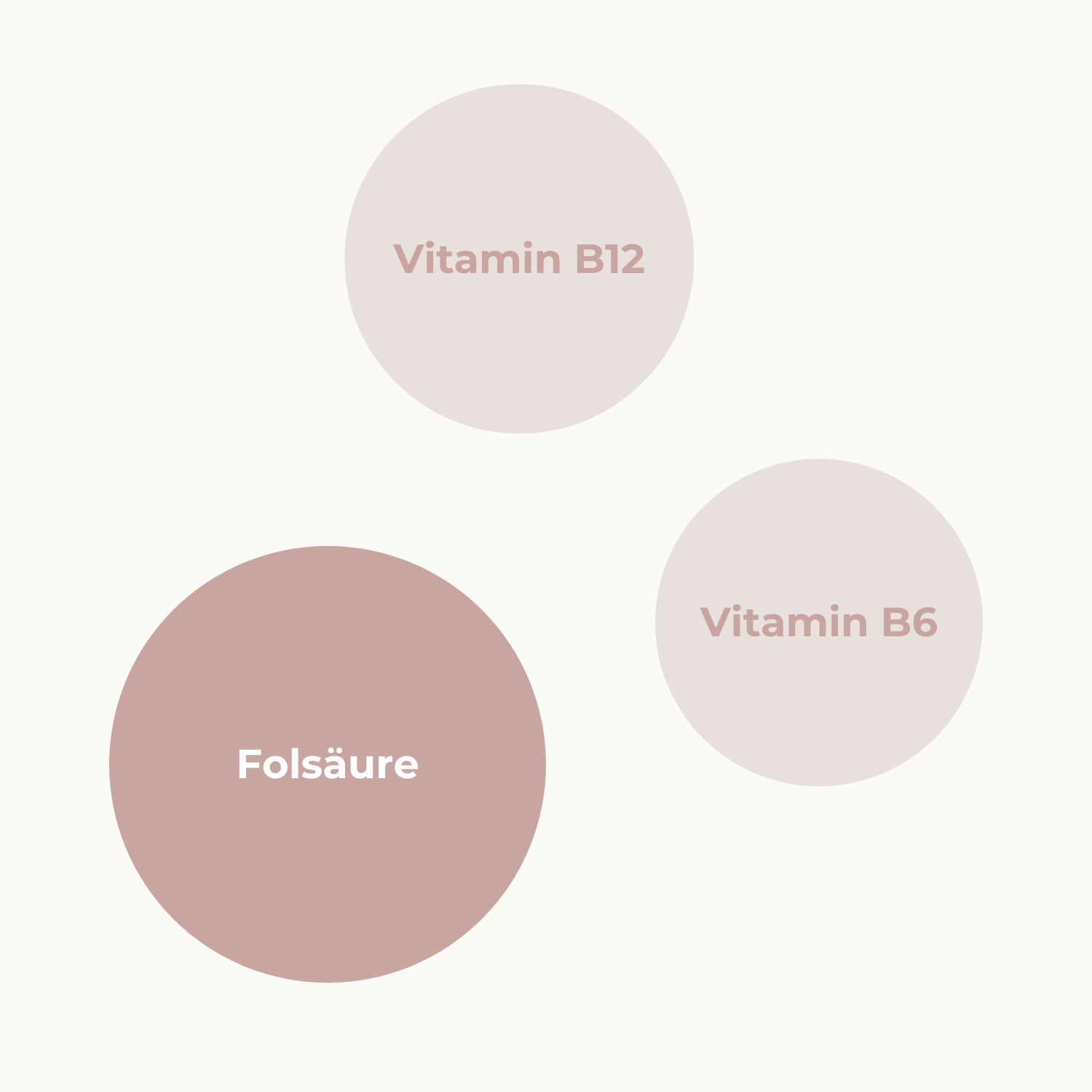
NUTRIENT PRESENTATION
folic acid
Contained in: green leafy vegetables, soybeans, liver
Form: Quatrefolic® ((S6)-5-methyltetrahydrofolate glucosamine salt).
Origin: synthetic
Supplier: Gnosis by Lesaffre
Place of manufacture: Pisticci, Italy
Function: Methyl group transmitter
Risk groups: pregnancy, alcoholism, unbalanced diet, taking the pill and other medications.
ADVANTAGES
Folic Acid Facts & Knowledge
Supply in Germany according to the National Consumption Study II: 79% of men and 86% of women do not reach the recommended daily intake of folic acid [12]. In the German Health Study for Adults (DEGS1), 95% of women of reproductive age did not reach the erythrocyte folate concentrations of 400 ng/ml (906 nmol/l) recommended by the WHO to effectively reduce the risk of neural tube defects [7].
FOLIC ACID AND ITS FUNCTIONS [9]
Support from folic acid:
- Folic acid, an essential vitamin, plays a key role in supporting enzymes in the body's one-carbon metabolism, which is critical for various metabolic functions.
- Building genetic material: It contributes to the formation of RNA and DNA, the building blocks of the genetic code of life.
- Importance of the Methionine Cycle: Folate is essential for the methionine cycle, which ensures proper conversion of amino acids in the body.
- Production of SAM: This cycle produces S-adenosylmethionine (SAM), a compound that is essential for methylation processes, which in turn are essential for cell function.
- Methyl group transfer: SAM transfers methyl groups to various enzymes and thus contributes to the regulation of important biological activities.
- Effects on vital molecules: These enzymes use methyl groups to modify important molecules such as DNA, hormones and neurotransmitters, affecting health and development.
- Regulation of physiological processes: The methylation reactions regulated by SAM are essential for numerous physiological processes and ensure the smooth functioning of the organism.
FOLIC ACID IN PREGNANCY
- The need for folate increases, especially during phases of increased cell growth such as during pregnancy.
- Studies show that adequate folate intake can reduce the risk of various birth defects, particularly neural tube defects (NTDs), preterm birth and miscarriage, and may lead to better growth of the fetus or placenta [1, 2, 16, 17].
- The period around conception and the first few weeks after fertilization are particularly crucial for ensuring adequate folic acid intake, as women often do not know they are pregnant immediately. It is therefore recommended that women ensure they have adequate folate levels at least one month before possible conception and maintain them during the first three months of pregnancy.
- Quatrefolic® provides a source of (6S)-5-methyltetrahydrofolate, the most bioactive form of folate, which may be particularly beneficial during the period around conception, pregnancy and breastfeeding to ensure adequate supply.
ACCEPTED HEALTH CLAIMS
- Folate contributes to the growth of maternal tissue during pregnancy
- Folate contributes to normal amino acid synthesis
- Folate contributes to normal blood formation
- Folate contributes to normal homocysteine metabolism
- Folate contributes to normal psychological function
- Folate contributes to the normal function of the immune system
- Folate helps reduce tiredness and fatigue
- Folate has a function in cell division
NUTRILAB'S FOLIC ACID
- Quatrefolic® is considered “ready-made” folate, meaning the body can use it immediately and without any metabolism.
- Quatrefolic® has been rigorously tested for safety and consistency and is strictly protected by internationally pending patents.
biomarkers
Note: Most women of childbearing age do not reach the World Health Organization recommended level of folate in red blood cells (according to WHO 2015: erythrocyte folate ≤ 400 ng/ml (906 nmol/l)) to reduce the risk of neural tube defects [7].
Red blood cell folate is the most reliable biomarker of folate status because it reflects tissue folate stores, and concentrations below 317 nmol/L indicate folate deficiency [9].
> 906 - 2848 nmol/l
4-30 nmol/l
< 10μmol/l

COLLEAGUES
Who does folic acid work with?
Folic acid, vitamin B12 and vitamin B6 and choline are essential C1 carriers to maintain vital reactions in the body so that cells divide and enable tissue growth.
FOR FURTHER READING
Evidence-based formulations
We use nutrients that are backed by a comprehensive body of research that is growing daily.










